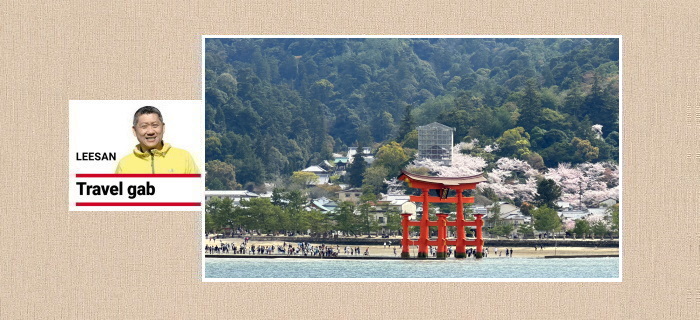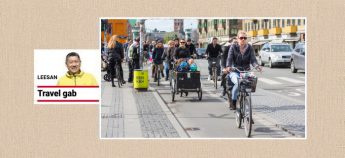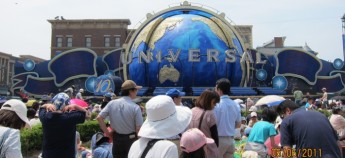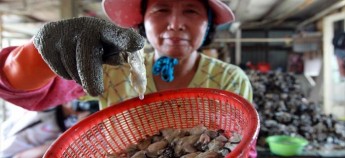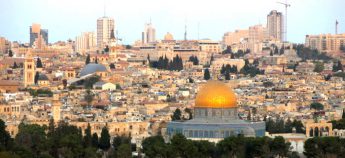Let peace bloom and grow – by leesan
Our columnist is still on a sakura high, this time in Kyoto, where time seems to have stood still from centuries ago.
On Dec 7, 1941, Hawaii’s Pearl Harbor came under the surprise attack of Japan’s Isoroku Yamamoto, sparking off a war in the Pacific region. The United States and its allies subsequently launched aggressive counter assaults and bombed Japanese cities, including Tokyo, Osaka, and Yokohama.
On Aug 6, 1945, the US dropped a five-tonne atomic bomb codenamed “Little Boy” on Japan’s Hiroshima, and three days later, “Fat Man”, on Nagasaki, which then caused an abrupt end to the World War II.
Today, Hiroshima – rebuilt and redeveloped over decades – is a neat, orderly, and prosperous city. Around the city’s fabulous Peace Memorial Park are tens of thousands of Somei-Yoshino and Itosakura cherry trees, planted years ago and are now mostly in their 70s. Did you know that the older a sakura tree is, the more varied and fascinating its blossoms are?
The arrival of spring after the biting cold last winter comes with the first perfect hanami season since the pandemic. Compared to pre-pandemic times, we can now expect visitors to the many sakura parks across Japan to be more appreciative and anticipative of the season.
While the flowers were blown by the gentle breeze and slowly drifting in the air, I met a couple of survivors of the war. With their frail bodies, they slowly walked in the park escorted by their care personnel, and quietly gazed at the cherry blossoms that were in full bloom. Perhaps they were offering their prayers to whichever deity they worship that our world will not see another merciless war like what they once went through.
Unfortunately, 8,000km from Japan’s gorgeous cherry trees, the fires of war are still raging for over 400 days now in Ukraine, with no respite in sight.
Still, looking back at those tragic years of World War II, it appears that the only object that could provide some solace to the millions of fallen soldiers and innocent civilians is that war memorial, and a lone frangipani tree that is blooming fiery red flowers.
Everyone knows that wars are horrendous, and we all condemn war criminals in one voice. But why are there still so many people over the generations who would start wars for whatever reason?
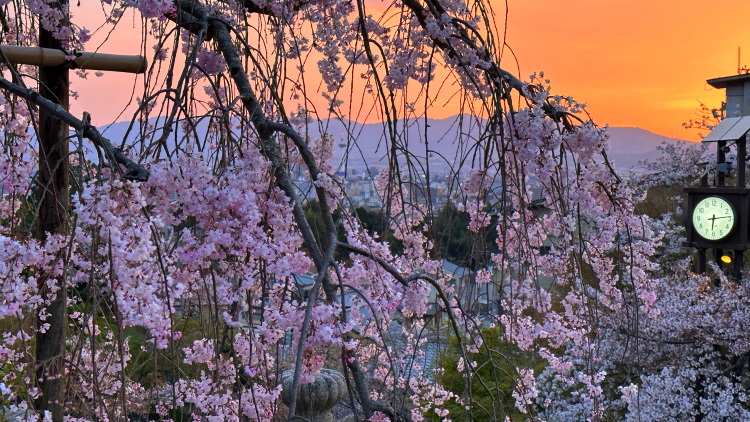
The beautiful sakura flowers at Kiyomizu Temple, Kyoto. — photos: leesan
Sakura history lessons
As early as April 1940, the Pentagon had already secretly drawn up an atomic bomb detonation map of 17 potential target cities across Japan. Hiroshima was the first, followed by Kokura, Yokohama, and Kyoto, although in the end Nagasaki, which wasn’t even one of the target cities, was also bombed.
It was said then that Kyoto was subsequently excluded because of its historical significance, noble status, and breathtakingly beautiful cherry blossoms. If Kyoto had been bombed, perhaps the Americans would be hated by everyone in Japan and the consequences could be very grave. That is why the 400 shrines and 400 temples across the ancient city have managed to escape the destruction.
Notably, the iconic thousand-year-old Itosakura cherry tree in Maruyama Park in Kyoto is still thriving today, along with the 1,500 Prunus Pendula sakura trees in Ninenzaka, Kiyomizu-dera and Heian Shrine. These trees have survived hundreds and even thousands of years of turbulence and are still in existence today.
It has been said that Rome, Egypt and Kyoto are like open-air museums, and I totally agree. Personally, though, I feel that Kyoto is still a notch above its peers, because the ancient capital city of over a thousand years has retained its original look, unaffected by modernisation.
Celebrating its 1,228th anniversary this year, Kyoto is still encapsulated in the Wabi-Sabi aesthetic ambiance created by Japanese tea master Sen no Rikyu some 500 years back. Strolling around Kyoto is like being transported to a movie studio with rustic elegant lodges, kimono-clad artisans with their clogs, well-built rickshaw pullers, idyllic bamboo forests, traditional kitchen utensils that are beautifully “imperfect”, Tsujiri matcha ice cream …
In addition to that, the Yaezakura sakura trees on the banks of Kyoto’s Fushimi River dancing graciously to the tempo of the breeze adds to the ambience.
Have you ever thought about how Japan’s younger generation would inherit and promote the spirit of their people as well as their rich cultural legacies and festivities in the future?
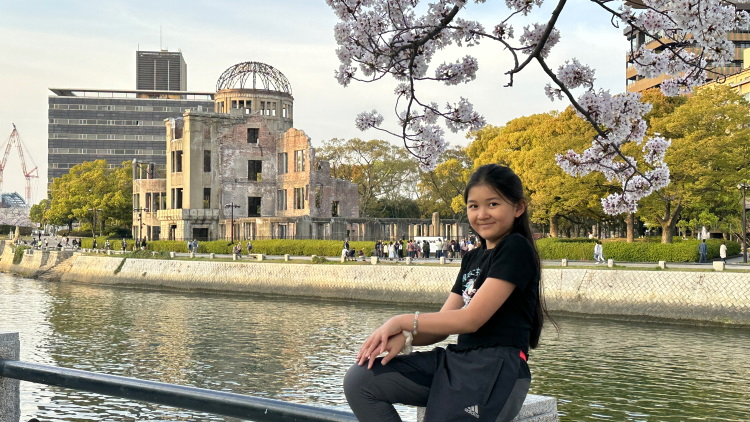
One of the columnist’s young travel uddies posing in front of HHiroshima’s Atomic Bomb Dome, the remaining structure of a painful past.
Everything is linked
If not because of the Treaty of Shimonoseki signed on April 17, 1895, Emperor Meiji would not have the 200 million taels of compensation from China’s Qing Dynasty, and Japan would not have sufficient funds to strengthen its navy and ferociously expand its territory. This they did by making inroads into Soviet Union, occupying Korea, establishing Manchukuo (Japan’s puppet state), and initiating the Pacific war.
Without the funds, too, one could say that the atomic bombing of Hiroshima and Nagasaki would not have happened.
But let’s look at things from a different perspective: Imagine in April 1895, a geisha with her painted face sang and danced to entertain the sake-gulping guests at Shunpanro Inn in Shimonoseki who were in a jovial festive mood. Hirobumi Ito was hosting a feast for Li Hongzhang and his entourage of 100 men, savouring the succulent and delicious fugu (puffer fish).
Of course, this never actually happened.
While history could not be undone, at least it could serve as a lesson for us to be constantly prudent in all our undertakings.
The soul of the sakura still lingers in Shunpanro today. The solemn-faced Shimonoseki City History Museum director Haruki Kojo took me to the site of the Treaty of Shimonoseki negotiations at Nisshin Kowa Memorial Hall. Shimonoseki mayor Shintaro Maeda (also an aide and good friend of former prime minister Shinzo Abe) said: “Don’t think too much about this. Let me keep you company this afternoon and let’s enjoy a sumptuous fugu feast while admiring the cherry blossoms on the banks of the Straits of Shimonoseki.”
Following the signing of the Treaty of Shimonoseki, some of our forefathers were forced to sail across the seas for a new life in South-East Asia, including my own parents, unfolding a new chapter in the early 20th century Chinese emigration history.
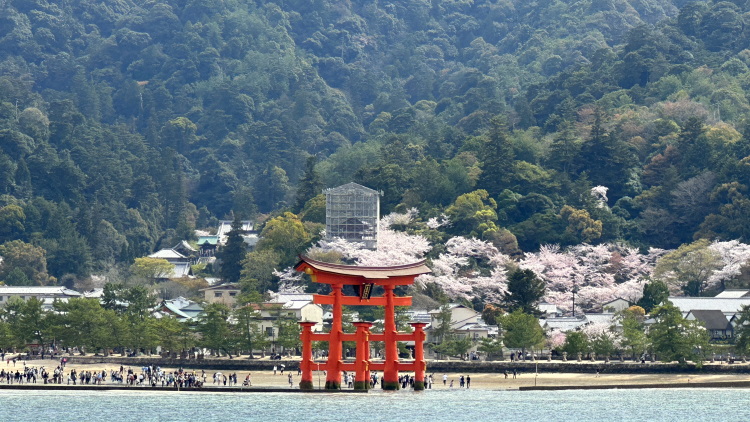
The cherry blossoms at Itsukushima Shrine in Miyajima, Kyoto were in full bloom. As a world cultural heritage site, it symbolises the inheritance of the culture and civilization of the Yamato period. – Photos: LEESAN
Time to move on
On Aug 14, 1945, Hirohito, the 124th Emperor of Japan, proclaimed the Imperial Rescript on the Termination of the War to surrender and bring the Pacific War to a conclusive end. As many as 350 military officers performed hara-kiri (ceremonial suicide) on the spot.
On Sept 27, Emperor Hirohito secretly drove to the US embassy to meet General Douglas MacArthur. The following day, newspapers across Japan and the world published the picture of these two men, signifying Japan’s formal surrender to the US.
In 1946, the de facto supreme commander of Japan was the US Command, in this case, Gen MacArthur. During the American “occupation” of Japan, massive reforms were introduced to the country’s political, economic, military and education sectors, among others.
Having reigned for 62 years, Hirohito then renounced his divinity to become an ordinary man.
Today, Japan’s cultures and customs have gradually swept the world. This year alone, Japan has welcomed some five million international visitors, thanks to its phenomenal cherry blossom season. It looks like the sakura has captured the hearts of the world!
It has been said that if the “Meiji Restoration” was not initiated by Emperor Meiji in 1868, we would not be drinking Suntory whiskey, enjoying a Kobe A5 wagyu teppanyaki feast or savouring a Kimura red bean roll today.
The emperor ascended to the throne at age 15, and during his 45-year reign, he actively promoted Western learnings while realising a constitutional monarchy. Of course, we also have to thank those Japanese scholars studying in Europe for their constructive proposals, including Yukichi Fukuzawa.
Unfortunately, the emperor eventually adopted an aggressive approach and became the one man responsible for starting Japan’s invasion of neighbouring countries.
Leesan, the founder of Apple Vacations, has travelled to 137 countries, seven continents and enjoys sharing his travel stories and insights. He has also authored five books.
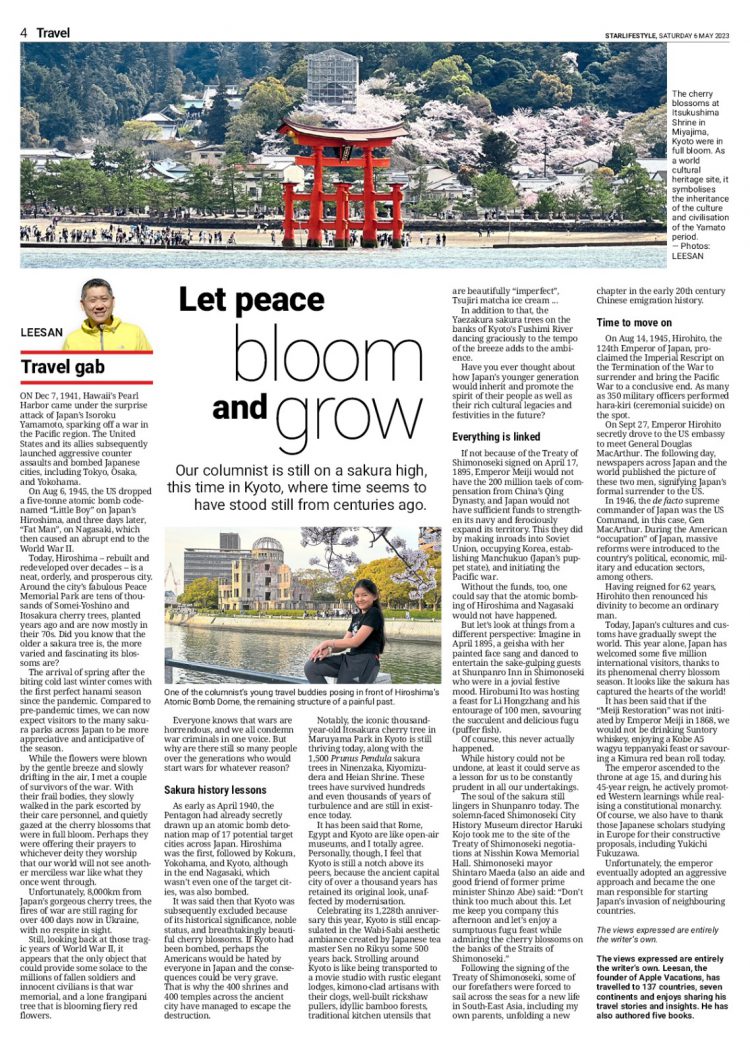
Published in STAR 2, 6 May 2023
全球超过80000家酒店,Apple101助您轻松订房,出行无忧,绝对优惠价。入住期间付款,多数客房可免费取消!
